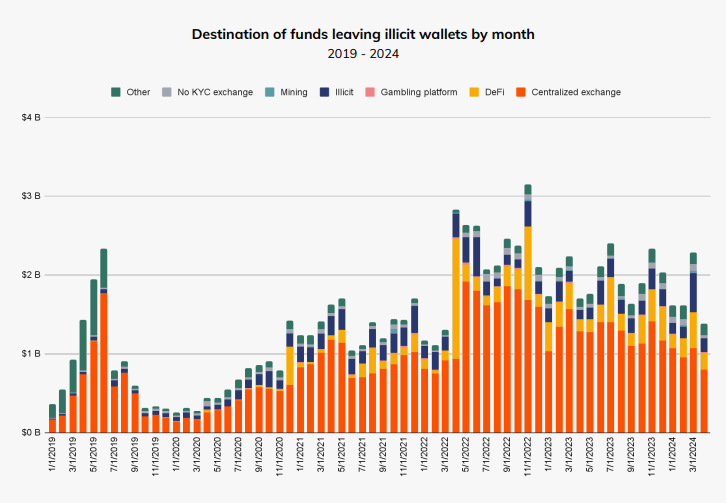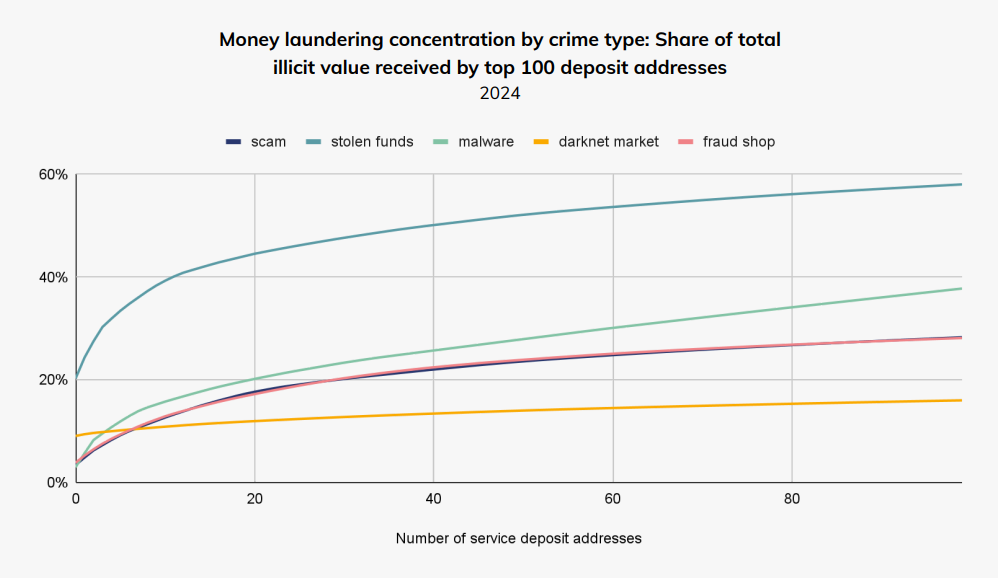
Key Takeaways
- Over 50% of illicit crypto funds end up at centralized exchanges, directly or indirectly.
- Stablecoins represent a growing portion of illicit funds in intermediary wallets.
Over 50% of illicit crypto funds end up at centralized exchanges, either directly or after obfuscation, according to the “Money Laundering and Cryptocurrency” report by Chainalysis. The report highlights a concentration of illicit funds flowing to just five centralized exchanges, which weren’t mentioned in the document. Additionally, the five centralized exchanges analyzed in the report registered a surge in conversion for funds from darknet markets, fraud shops, and malware.
“Illicit actors might turn to centralized exchanges for laundering due to their high liquidity, ease of converting cryptocurrency to fiat, and integrations with traditional financial services that help blend illicit funds with legitimate activities,” stated Chainalysis analysts.


Furthermore, stablecoins now represent a growing portion of illicit funds passing through intermediary wallets, which Chainalysis labels as consistent with the fact that these crypto assets account for the majority of all illicit transaction volume.
“This rise in the use of stablecoins likely reflects the overall increase in stablecoin adoption over the last few years — after all, both good and bad actors often prefer to hold funds in an asset with a value that will not change based on swings in the market. But using stablecoins also adds an element of risk for launderers: stablecoin issuers have the ability to freeze funds, which we address later.”















